|
|
| |
|
|
| |
|
A few days after my trip to Italy and Switzerland, I enjoyed a pleasant few days in Porto before going on to Santiago de Compostela over the border in Northern Spain. There were no travel mishaps this time either.
I travelled from Bristol to Porto which was an easier journey from Swindon and everything went smoothly. I had booked into the AirPorto Hostel and had, as usual, pored over Google Maps hoping that I would recognise the roads which I had to take on arrival in Porto. My usual difficulty is finding the correct exit to then take on the roads... I have been totally lost in railway stations before but all ways out of Porto Airport seemed to lead in the same direction and all was well. I was at the hostel in just under ten minutes, on foot.
The receptionist, despite streaming with a cold, was very welcoming and, as I had ventured a word or two in the vaguest of Portuguese, then gave me a few tips on which words to use. I appreciated it too. Okay, I am too old now to venture into dormitories so had booked the only private room which came with a bunk bed, a reminder of prep school life back in the 1970s. I felt that the lower bunk gave me a better chance of hearing the alarm given my imperfect hearing. It did, but maybe I was aware also of banging my head in the middle of the night. A self-service breakfast was provided and the hostel served its purpose admirably before I spent the next two nights in Porto.
I had been to Porto around eighteen to twenty years ago. It may have been more normally known as Oporto then but, hey ho, it was the same place. On that occasion, I had been robbed on a Lisbon tram: I knew immediately that as I was being shoved about, something was amiss and the credit cards (in a wallet inside a bumbag) had been stopped within half-an-hour of the theft. It did mean that, on reaching Oporto/Porto, I didn't have as much money available to do what I hoped to so this later and more recent visit gave me that opportunity. My wallet stayed intact also.
The Porto Metro - from whose ticket machines I was able to purchase a 24-hour day pass for 7.55 euros - was busy and it was difficult to find a seat on the trip down to Trindade, one of the main hub stations. From there, I quickly found my accommodation, the Hotel Grande Rio, after a connecting one-stop journey. It was too early to check in at the time of my arrival but I was grateful that I could leave my bag there and return to Faria Guimares Metro station (where one emerged on to the main road above by lift). Portuguese is not, to me, an easy language and I would have to admit that my pronunciation varied considerably to the recorded voice on the metro. Listening to it, it is also safe to say that I would not have remotely recognised that it was my stop had I not been following the route map.
Porto was fascinating and I saw a lot more of the city than I had all those years ago before I was able to check in at the Grande Rio around 4 p.m. I enjoyed seeing the cathedral in the enticing Sao Bento area. The main scenic highlight is undoubtedly the Dom Luis 1 bridge, a vast iron structure which allows pedestrians and those travelling by metro to cross the River Douro. Down below, a proliferation of restaurants, port establishments, river cruise and crossing operators and many tourists and locals make this a wonderful spot for photography and a vibrant way of living. One realises also how steep many of Porto's streets can be. Further bridges line the River Douro along its banks.
There was also a very nice park near the bridge where I enjoyed the views and my lunch. In such a populous and popular area, there was still ample space to enjoy the views. It was enjoyable taking the metro from this stop, Jardim do Morro, over the bridge to Sao Bento. Beware those who like taking photos or sending text messages as the metro passes slowly but very close by to pedestrians.
I also had a dress rehearsal - making use of the metro card - to see the main railway station at Campanha as I had a fairly early start from there the next day. It is easy to make the mistake of seeing Campaniha on the metro map which is much further on from the main railway station at Campanha, four stops from Trindade. In any event, it was straightforward at Campanha.
A more intricate station is at Sao Bento whose entrance hall with walls depicting past - one assumes - glories in a type of Wedgwood (blue and white) depiction was extraordinary and beautiful. I noticed a "trend" for this type of style in other places during my stay in Portugal.
I somehow expected to find Portugal slightly more reasonably priced to eat. In any event, I found a place more off the tourist areas and ate very well at a restaurant by the National Theatre. I came out with many hand signals and far fewer words of Portuguese but made myself understood to the staff (who spoke very much better English than I do Portuguese). The 2.50 Euro copa of house tinto (red) was wonderful and encouraged me to return the following evening where I again ate well.
|
One of the reasons for coming to Portugal was, yes, another Where Eagles Dare mission: this time, to find the grave of actor Donald Houston whose ending in the film was particularly horrific on the side of the cable car. For Donald's genuine final resting place, I have to thank my old cricketing friend and Shirburnian historian, George Tatham, who impressed me with his knowledge of Portugal and Donald Houston. George is a fount of knowledge and has written on many weird and wonderful local subjects including a history of Sherborne's toilets through the ages and Sir Arthur Conan Doyle's cricketing exploits at Sherborne School ( a place I once played at and which I am unlikely to forget having been caught on the boundary inches from hitting my first six. Let's just say that I never got any closer, or further...) Anyway, I digress again. Being one who enjoys looking for, shall I say, needles in haystacks, I was directed by George towards a delightful town called Miranda do Corvo, an hour's bus ride from Coimbra (itself an hour-and-a-quarter from Porto by train).
It rained that morning before I left Porto but improved. The train was late but didn't improve and we ended up over half-an-hour late at Coimbra B Station. It should have been a comparatively easy walk to the main station at Coimbra but guess who made a meal of it? Realising the futility of it, I took the train for the three-minute ride and just managed to make the bus to Miranda by the skin of my teeth. I was ashamed to find that I was the only person who hadn't bought a ticket from a kiosk - I didn't have time - but, anyway, it had its benefits (and, maybe, disadvantages). The driver was very happy to sell me a ticket but asked my age. I paid half-price. I was classed as a Senior. (My pride liked to say that the driver misheard and I made sure that I struggled to the back of the coach to prove, if only to myself, that I can still move).
Miranda do Corvo is a very pleasant town. Large enough for me to not be able to see the elevated church which I sought and thereby go off on a slightly longer walk than planned but the predominantly white buildings, in by now fine weather, made it particularly attractive. Once I had seen it looming above the town, even I had little difficulty in finding the Igreja Matriz and the adjoining cemetery where Donald lies buried. I should point out here, via George's kind information, that anyone seeking Donald Houston's grave will not easily find it. The reason behind this is that Portugal, like I read other European countries, has trouble in laying its deceased to rest and there seems to be an arrangement whereby - how shall I put this? - memorials are "bought" for a number of years. Hence, Donald will not be found with his name on the tomb as he now lies underneath a more recently-deceased person. When one sees the little room to manoeuvre between graves - which, frankly, is negligible - one can maybe understand the extent of the difficulties. Anyway, I think that I found, and paid my respects to Donald, who died in Coimbra in 1991 aged 67.
The views from the Igreja Matriz are delightful. There is a huge statue of Jesus which is immediately the focal point of this high point of Miranda and Stations of the Cross adorn the wall around this area. It made a nice spot for my lunch although my 0.89 euro carton of vinho tinto had decreased after it leaked in my bag and some of the contents had seeped through on to the floor of the outbound train earlier that morning. In my slight embarrassment (and with the adjoining seat free), I had taken my wet-weather trousers out of the same bag and tried to clear up the slight mess. Yes, all that happened was that it made the situation worse. Anyway, by the time that I prematurely fled my seat, I had recovered the situation to the stage where the wine patches had dried out quite nicely. For the smell, I cannot vouch. Blimey, fellow travellers might have thought, that one started early...
The twists and turns of the beautiful scenery back to Coimbra made me feel very slightly bilious but I quickly recovered. I don't think that it was the cheapest of cheap plonk which was actually perfectly pleasant: maybe, though, I am not showing myself as a wine buff here...
I was on a fairly early train the following morning over the border to Santiago de Compostela, a place I have long wished to visit. Bear in mind that there is a time difference between Portugal and Spain, a point I had neglected until just before we arrived in the transfer station of Vigo, a port, one hour earlier than anticipated. We were in Spain.
The weather turned and rain accompanied the onward train to Santiago de Compostela. Rain indeed accompanied everyone much of the time in this famous city. Some people make the walk along the lengthy St. James's Way hike from France: I regret that I didn't, arriving by the aforesaid train. It is a bigger place than I had expected but the historic centre, which naturally has the cathedral as its focal point, is nonetheless a decent size also. I stayed in the Hostel Forest, a quaint and delightful place just three minutes walk from the cathedral.
|
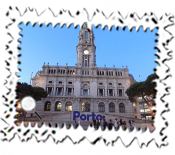



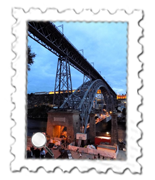
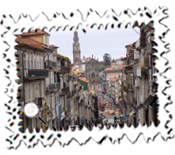



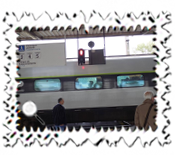

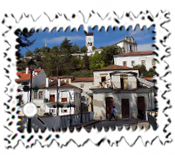
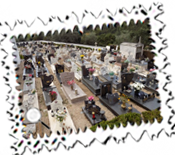
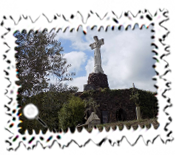


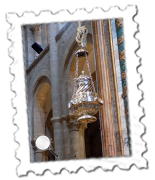

|
|
My parents had visited Santiago de Compostela many years ago, on a Sunday. It has long been a bit of a joke whenever Domingo Cerrado (closed on Sunday) comes up. Evening meals tended to start around 9 p.m. but not at all restaurants on Sundays, it seems. It rained for them too so their trip, whilst of course taking in and admiring the cathedral, was briefer than it might have been when they found a lot shut - and also a lot of rain - on that Sunday which was earlier in the year than my trip. Anyway, I had fewer difficulties in eating before 9 p.m. but had to be coaxed into my second choice of restaurant, which was pleasant.
The cathedral is a remarkable sight. All number of similarities to other places I have seen (both newer and old) came to mind just standing outside in the large square in front of the cathedral. I naturally went inside and enjoyed it. My parents remembered the censer which is, I believe, only used on St James's Day but this mighty piece belches out incensed smoke and, from a YouTube video, looked mighty precarious for those seated near the front altar as it was being swung to and fro. I was delighted to have finally visited Santiago de Compostela after a few years of thinking about it.
The Airport bus, costing just 1 euro for a thirty-minute ride, was difficult to find information on the internet about. I wouldn't say that it's Santiago de Compostela's best kept secret but, in yet more rain the following morning, I was pleased to board it knowing that I was en route to the airport. Face masks/coverings were required and my Bedouin headwear made a re-appearance to keep all concerned happy.
I suspect that I might have been a little lucky with my cabin baggage. Having for once travelled lightly, much of what I brought was not required on the way back - work that one out - so I did my best to pack the outbound fold-up bag and remaining contents into a back-pack. It took ages. It didn't look too bad and may - just - have conformed to the allowed measurements. When I saw people at the final hurdle (gate departure, next stop aircraft) either repacking or handing over a credit card, I did wonder if I might be stopped also. I like to think that I acted normally, smiled, kept the bag meticulously out of the way whilst handing over my boarding pass and didn't look guilty (preconceived or not). In any event, I was fine - and my trip to Portugal and Spain was over satisfactorily as I walked on to the aircraft wearing almost two sets of clothes. |
| |
|
|
|
|
|